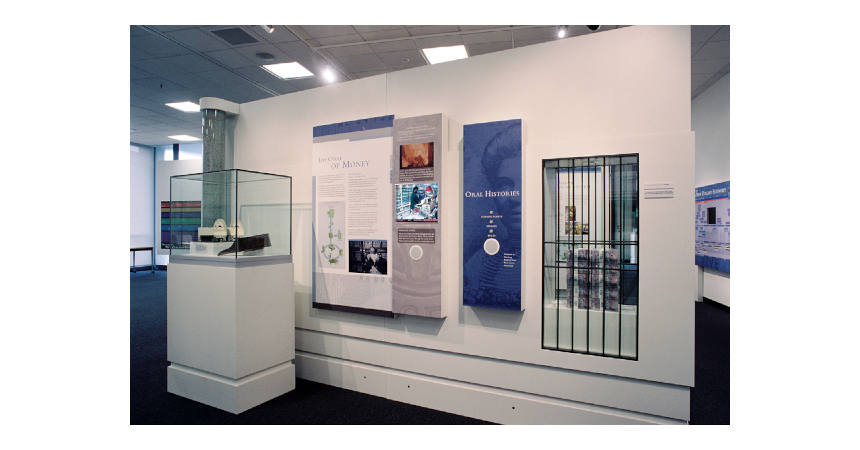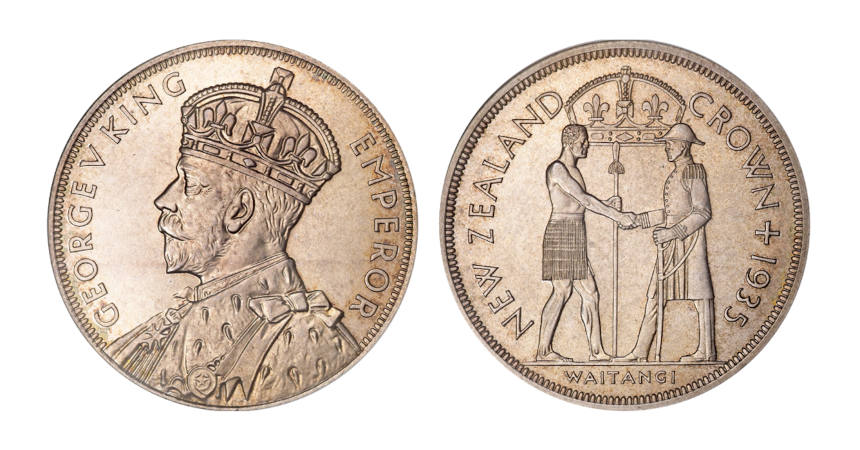Reserve Bank of New Zealand Museum
Wenn es kein Logo gibt, wird diese Spalte einfach leer gelassen. Das Bild oben bitte löschen.
(Dieser Text wird nicht dargestellt.)
The Terrace
Wellington, New Zealand
Tel: +64 (04) 472 2029
The Reserve Bank Museum, opened in September 2006, is the only specialized economic and central banking museum in New Zealand, and is designed to educate and inform, highlighting New Zealand’s economic and banking history, as well as the origins and role of the central bank.
Numismatic Collection
The Reserve Bank of New Zealand owns a small collection of paper money and coins, some of which are on display in the Museum. Although the Bank has been the sole producer of New Zealand’s banknotes since 1934 and coins since the late 1980s, the collection also includes a range of other banknotes and coins, such as £1-banknotes issued in the 1860s and 1870s by the Bank of Otago, Bank of Auckland, and Bank of New Zealand, some of which are on display.
Commemorative Coins
Other rare and important examples of New Zealand’s numismatic history include a selection of coins issued by the Bank to commemorate various events. These include one dollar collectors’ coins from 1970, 1974, 1978, 1983 and 1986; a “Benz” gold coin from 1998; and a complete 1937 proof set.
Merchants’ tokens
In the early colonial period there was no formal New Zealand currency, and British currency was commonly used. Promissory notes and merchants’ tokens were redeemable from the issuing merchant. The collection includes examples by Jones and Williamson, J. Caro & Co., Edward Reece, and Milner and Thompson.
Reserve Banknotes
The first series of Reserve Banknotes were issued 1934 on a temporary basis until a more permanent series could be developed. A complete set of 1940 Series 2 Reserve Banknotes, the intended lasting design, is also on display. These banknotes remained in circulation until decimalization in 1967. On display are a set of printing plates, and draft sketches of the third series decimal banknotes.
Bank of Aotearoa £1-Banknote
Tukaroto Matutaera Potatau Te Wherowhero Tawhaio (d.1894) was the second Maori king and in the 1880s he founded the Bank of Aotearoa, which issued a £1-banknote. The banknote was never circulated, and this specimen is one of three known to exist, which is a highlight of the collection.
Counterfeit Banknotes and Polymer Security Features
A few of the counterfeits the Bank has collected over the years are on display, along with details of some of the security features in the current banknote series. New Zealand was one of the first countries in the world to adopt polymer for its banknotes, being more durable and offering superior security features. Displays highlight some of the security features of New Zealand’s modern banknotes.
The Balancing Act
The rear wall of the Museum has been dubbed the “Balancing Act” and is designed to highlight the wide range of tasks and functions performed by the Bank under the Reserve Bank Act 1989. The Bank has roles that range from formulating monetary policy to monitoring and supervising the health of the financial system, maintaining foreign reserves, operating in the financial markets if necessary, and issuing currency as required. It is very much a balancing act, symbolized by scales from the Bank’s collection.
This text was written by Howard M. Berlin and first published in his book Numismatourist in 2014.
You can order his numismatic guidebook at Amazon.









